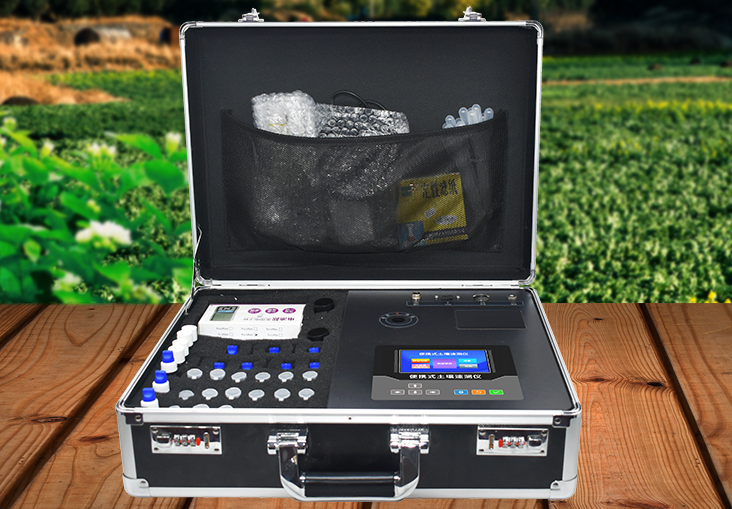In the ever-evolving landscape of modern agriculture, technology plays an increasingly pivotal role. Among the myriad innovations transforming farming practices, advanced soil sensors stand out as a cornerstone of precision agriculture. These sophisticated devices offer farmers unparalleled insights into the health and status of their soil, enabling them to make data-driven decisions that optimize crop yields, reduce resource consumption, and protect the environment. This article delves into the intricacies of advanced soil sensors, exploring their technological advancements, applications in precision agriculture, benefits, challenges, and the future trajectory of this transformative technology.

The Evolution of Soil Sensing Technology
Soil sensing technology has come a long way from its rudimentary beginnings. Early soil sensors, primarily used for measuring soil moisture content, relied on electrical conductivity or capacitance principles. While these basic sensors provided valuable information, their accuracy and reliability were often limited by factors such as soil type, temperature, and salinity.
Advancements in microelectronics, materials science, and data analytics have led to the development of more sophisticated soil sensors. Modern sensors employ a range of technologies, including optical, electromagnetic, and biochemical methods, to measure a multitude of soil parameters. These include moisture content, temperature, electrical conductivity (EC), pH, dissolved oxygen, nitrate levels, and even microbial activity. The integration of Internet of Things (IoT) technology has further revolutionized soil sensing by enabling real-time data collection, transmission, and analysis.
Core Technologies and Principles
Optical Sensors
Optical sensors utilize light to analyze soil properties. Near-infrared spectroscopy (NIRS), for instance, measures the absorption of near-infrared light by soil components to estimate nutrient levels, organic matter content, and moisture. This non-destructive technique is highly accurate and can be performed in situ or on soil samples.
Electromagnetic Sensors
Electromagnetic sensors emit and detect electromagnetic waves to assess soil properties such as moisture content, salinity, and texture. Frequency domain reflectometry (FDR) is a common technique used in these sensors, which measures the dielectric permittivity of soil to infer moisture content. Electromagnetic induction sensors, on the other hand, estimate soil EC and can indirectly indicate nutrient availability and soil salinity.
Biochemical Sensors
Biochemical sensors detect specific biochemical reactions within soil to monitor parameters like microbial activity, respiration rates, and enzyme activities. These sensors often use amperometric, potentiometric, or fluorometric principles to measure changes in electrical current, potential, or fluorescence, respectively.
Applications in Precision Agriculture
Soil Moisture Management
Accurate soil moisture monitoring is crucial for efficient irrigation practices. Advanced soil sensors provide real-time data on soil moisture levels, enabling farmers to apply water precisely when and where needed. This not only conserves water resources but also enhances crop growth by preventing both under- and over-watering.
Nutrient Management
Soil nutrient sensors enable farmers to map the spatial variability of nutrient levels across their fields. This information is vital for site-specific nutrient application, reducing the risk of nutrient runoff and leaching while maximizing crop uptake. By matching nutrient supply with crop demand, farmers can optimize fertilizer use and reduce costs.
Soil Health Monitoring
Soil health is a multidimensional concept encompassing physical, chemical, and biological properties. Advanced sensors can monitor indicators of soil health such as organic matter content, soil structure, and microbial diversity. Continuous monitoring allows farmers to implement practices that enhance soil health, leading to improved crop resilience, productivity, and long-term sustainability.
Disease and Pest Management
While primarily focused on soil properties, advanced sensors can also indirectly aid in disease and pest management. For example, sensors that monitor soil moisture and temperature can provide early warnings of conditions conducive to pathogen growth. Additionally, biochemical sensors that detect changes in soil microbial communities may offer insights into shifts that precede pest outbreaks.
Benefits of Advanced Soil Sensors
Increased Crop Yields and Quality
By providing detailed, real-time data on soil conditions, advanced sensors enable farmers to optimize crop growth environments. This leads to increased yields, improved crop quality, and reduced variability between fields and seasons.
Resource Efficiency
Precision agriculture, facilitated by soil sensors, promotes efficient use of water, fertilizers, and pesticides. Reduced input costs, coupled with higher yields, translate into increased profitability for farmers.
Environmental Sustainability
Advanced soil sensors contribute to more environmentally sustainable farming practices by minimizing nutrient runoff, reducing greenhouse gas emissions from excess fertilization, and preserving soil and water resources.
Challenges and Limitations
Despite their significant potential, advanced soil sensors face several challenges. Cost remains a barrier for many farmers, particularly in developing countries. Additionally, the accuracy and reliability of sensors can be affected by soil variability, calibration issues, and environmental factors such as temperature and soil texture. Data integration and interoperability challenges also exist, as different sensors and platforms may use incompatible data formats and communication protocols.
Future Directions
The future of advanced soil sensors in precision agriculture looks promising. Ongoing research is focused on improving sensor accuracy, reducing costs, and developing more user-friendly interfaces. The integration of artificial intelligence (AI) and machine learning (ML) algorithms will enhance data analysis capabilities, allowing farmers to derive actionable insights from complex datasets. Furthermore, the development of multi-parameter sensors that can measure multiple soil properties simultaneously will streamline data collection and analysis processes.
Conclusion
Advanced soil sensors represent a significant leap forward in the quest for more efficient, sustainable, and profitable farming practices. By providing farmers with detailed, real-time insights into soil conditions, these sophisticated devices enable precision agriculture, optimizing resource use, enhancing crop yields, and protecting the environment. While challenges remain, ongoing technological advancements and innovations hold promise for overcoming these obstacles and unlocking the full potential of soil sensing technology in modern agriculture. As we move towards a future where data-driven decision-making becomes the norm, advanced soil sensors will undoubtedly play a pivotal role in shaping the landscape of precision agriculture.